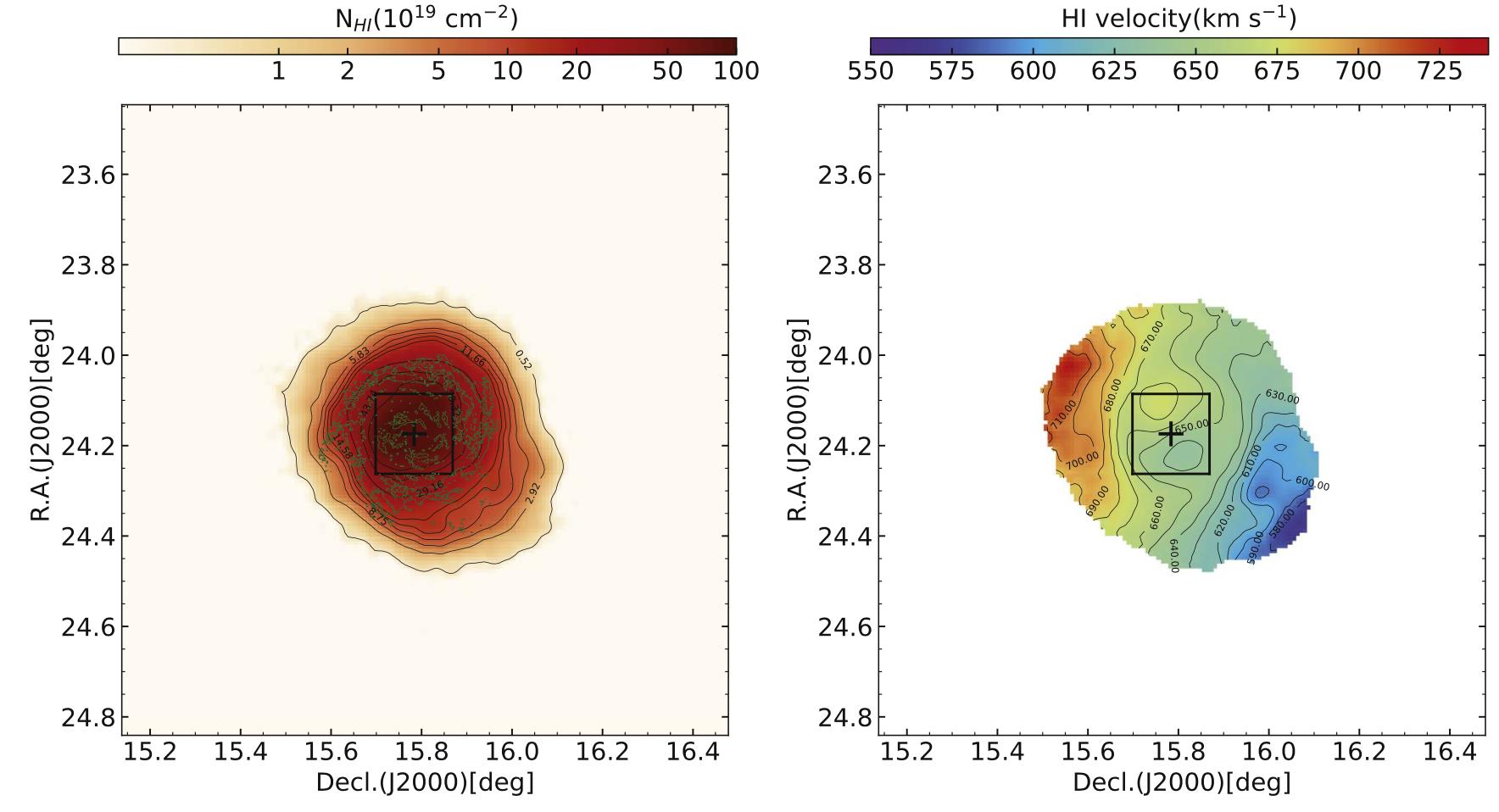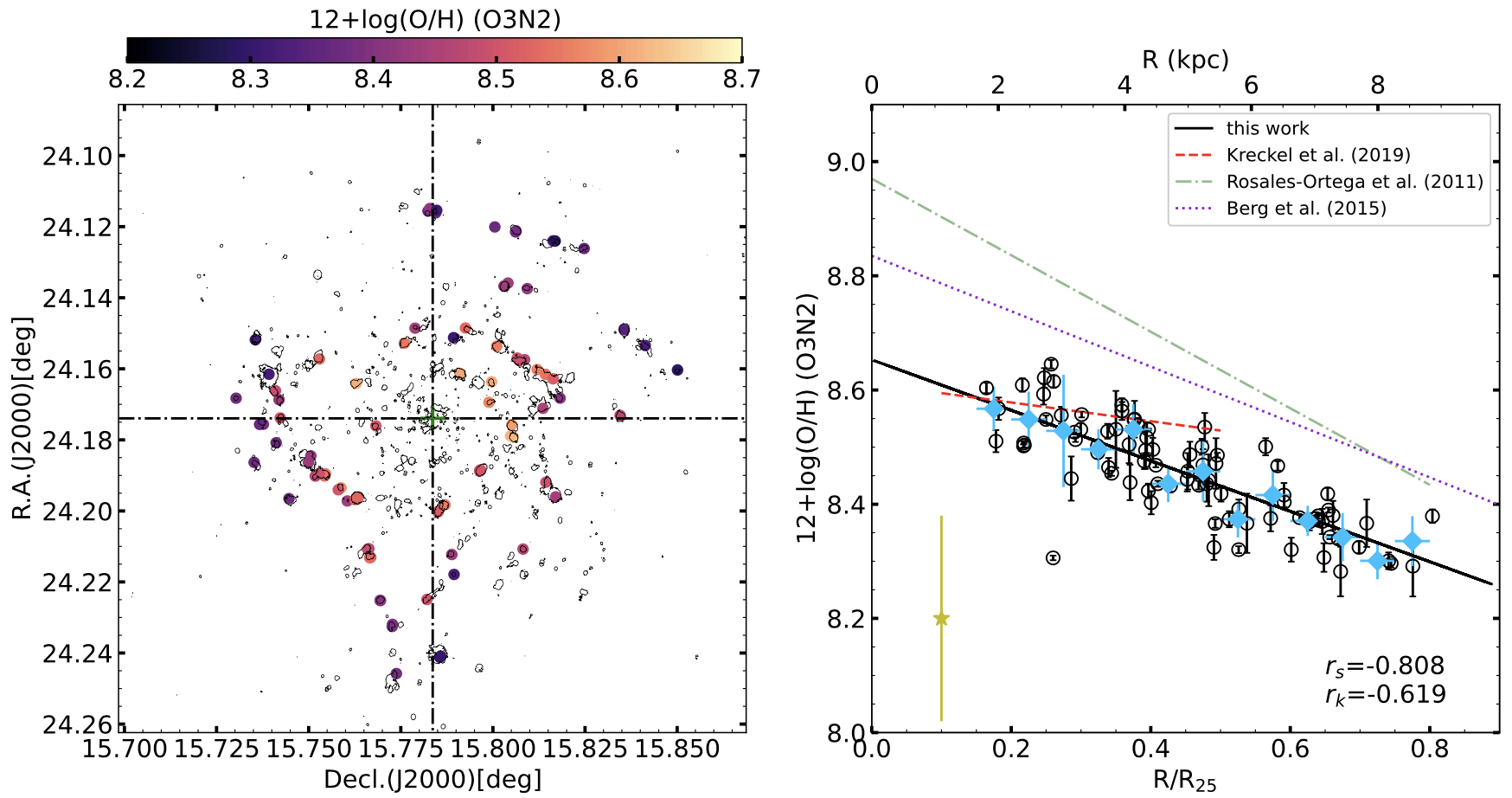

Researchers Unveil the Star Formation and Chemical Evolution History of the NGC 628
How do galaxies grow? How do their stars form? How do their chemical compositions evolve? A research team composed of researchers from the Xinjiang Astronomical Observatory of the Chinese Academy of Sciences (XAO), the National Astronomical Observatories of the Chinese Academy of Sciences (NAOC), and Peking University conducted an in-depth study of the well-known spiral galaxy NGC 628 using data from the Five-hundred-meter Aperture Spherical Telescope (FAST) and optical spectroscopy. Their findings confirm the 'inside-out' growth model, which suggests that galaxies evolve from their cores outward to their outer disks.
The study has been published in The Astrophysical Journal.
NGC 628, also known as the “Phantom Galaxy”, is a classic spiral galaxy. Building upon multi-band photometric data from ultraviolet (GALEX), optical (Beijing-Arizona–Taiwan–Connecticut Multicolor Sky Survey (BATC)), and infrared (Spitzer) observations, the research team analyzed the star formation rate, gas abundance, and dust extinction characteristics using spectroscopic data from the 2.16-meter telescope at the Xinglong station of the NAOC. They also employed high-sensitivity neutral hydrogen (H I) observations from FAST to uncover the gas distribution and internal dynamics.
The study revealed that the gas-phase metallicity in NGC 628 gradually decreases from the center to the outer disk, supporting the “inside-out” evolution model. The central regions of the galaxy host older stellar populations with enriched chemical elements, while the outer disk remains in a younger evolutionary stage.
Moreover, the researchers found that while the distribution of neutral hydrogen plays a role in shaping the overall structure of the galaxy, it does not directly determine the metallicity. This suggests that the chemical evolution of NGC 628 is primarily governed by its star formation history rather than short-term gas accumulation.
NGC 628 is a relatively isolated galaxy, free from recent interactions with other galaxies, making it an ideal natural laboratory for studying the intrinsic mechanisms of galaxy evolution. This study provides crucial observational support for galaxy evolution models. With data collected from subsequent observations, scientists will be able to study the evolutionary history of galaxies and unravel the mechanisms that have shaped galaxies in the universe as we see them today.

Figure 1: The H I integrated intensity map and the velocity field of NGC 628 from the FAST H I observations.

Figure 2: Two-dimensional distribution and deprojected radial distribution of the oxygen abundance of the H II regions in NGC 628.
Attachment Download: